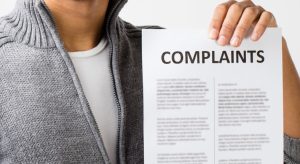Writing a complaint letter is essential when business owners seek to address issues professionally. An effective complaint letter can be a powerful tool to resolve conflicts relating to inadequate service, dissatisfaction with products, or misunderstandings with customer service teams.
This article will guide you through the nuances of crafting a formal complaint letter that communicates your concerns plainly while paving the way for an agreeable resolution.
How to Write a Complaint Letter Effectively?
Understanding Why Complaint Letters Matter in Business Affairs
Disagreement is inevitable in the business environment. Official complaint letters are critical in professional communication, providing a documented record of your issues and the steps taken to solve them. Consider a scenario where a regular client receives a defective product.

Rather than voicing frustration verbally, a well-structured complaint letter can outline the particular problems, their impact on their business operations, and their expectations for remedy. This formal approach underscores the significance of the issue.
Written documentation serves multiple functions: it allows you to express your thoughts clearly and provides evidence of your attempts to solve issues. For example, a letter recounting a complaint concerning a delay in service delivery can be vital if the situation deteriorates.
The letter is a key reference point if you must involve sector regulators or seek legal action. Furthermore, complaint letters are often taken more seriously than verbal ones, demonstrating your dedication to productively addressing the issue.
Components Essential to a Professional Complaint Letter
To ensure your letter of complaint achieves its intended goal, specific components are crucial:
- Specific Requests: Begin with a heading indicating the letter’s purpose, like “Formal Complaint Regarding Quality of Product.” This transparency sets the tone and context for the recipient from the start.
- Contact Information: Include your contact information to ensure the recipient can reach out easily.
- A Description of the Issue: Provide a precise accounting of the matter and a request for remedy.
Utilising unambiguous, straightforward language is key. Rather than stating, “I was extremely displeased with the assistance,” be exact regarding which facet of customer support failed to meet expectations – “The representative did not furnish the required particulars about my order status, leaving me unable to proceed with my venture.”
Avoid professional jargon or needlessly intricate terms, as these can obscure your message. Most significantly, sustain a respectful, professional tone throughout. An impactful letter emphasises understanding over attributing blame, fostering a spirit of collaboration.
Clearly and Accurately Portraying the Problem
When detailing the issue, include specific details like dates, incidents, and people involved to help the recipient understand the context and seriousness of your complaint. If applicable, provide supporting evidence such as receipts or previous correspondence.
Requesting a Specific Next Step or Resolution

The issue has been outlined, so now clear next steps must be stated. Consider including:
- Precise Requests: Clearly specify what you would like to see happen moving forward in response to the issue at hand. For instance, you might say, “I kindly request a complete refund for the defective item that I received or, alternatively, a replacement unit that meets the original specifications without any flaws or defects.”
- Potential Compromises: Providing compromise demonstrates a willingness to find common ground. Though wanting immediate remedies, accommodations showing understanding could expedite resolution, such as “Expediting a replacement unit as my project relies on this equipment.”
- Reasonable and Achievable Requests: Unrealistic demands can often lead to discouragement and may impede cooperation from the other party involved. Instead, I would greatly appreciate it if you could expedite the replacement process because the success of my project’s timeline depends significantly on having functioning and reliable equipment.
Presenting expectations distinctly but respectfully optimises positive responses. This shows a rational, reasonable partnership.
Civility Strengthens Communications
Politeness proves a powerful communication tool, avoiding defensiveness. Incorporate polite phrasings like “I appreciate attention to this matter” or “Thank you for considering my ask.” This courteous tone encourages collaborative will to remedy problems, whereas confrontation hinders progress.
Expressing thanks and empathy furthers amicable resolutions. For valued clients, adding, “I have always valued your services, hoping to solve this cooperatively” demonstrates a cooperative rather than adversarial stance for mutually agreeable outcomes that sustain strong business relationships.
Follow-Up Strategies for Complaint Letters
Undoubtedly, monitoring a response to a complaint is prudent. Employing further approaches can be beneficial if there is no reply within the typical interval of one to two weeks.
Send a Follow-Up

A follow-up message sent to their email address could read: “I am reaching out with this update because I have yet to receive a response concerning my previous correspondence from [date]. This allows me to maintain my determination to resolve this issue without appearing overly pushy or demanding.”
Reiterate Key Points
In a follow-up message, it is beneficial to clearly and concisely restate the primary concerns and objectives that were initially presented. Doing so serves to refresh the recipient’s memory regarding the specific issues we are facing and the resolutions we seek.
Additionally, expressing a willingness to continue the conversation and engage further as necessary creates an environment conducive to collaborative dialogue, paving the way for potential solutions.
Open a Dialogue
Keeping meticulous records of all interactions, including dates, names, and relevant details, significantly aids in navigating through previous discussions. It also provides organised references, which can ensure clarity and understanding if those details become important later on.
Maintain a Communication Log
When your sincere attempts to resolve the issue in good faith do not lead to a satisfactory outcome, consider escalating the matter to higher administration officials or designated oversight bodies within the organisation.
It is essential to provide thorough supporting documentation that clearly outlines your concerns. Additionally, be flexible and adaptable to the evolving responses you may receive from the authorities involved.
Adjusting your tone can help preserve open lines of communication, thereby maintaining opportunities for a constructive and productive discussion moving forward.




